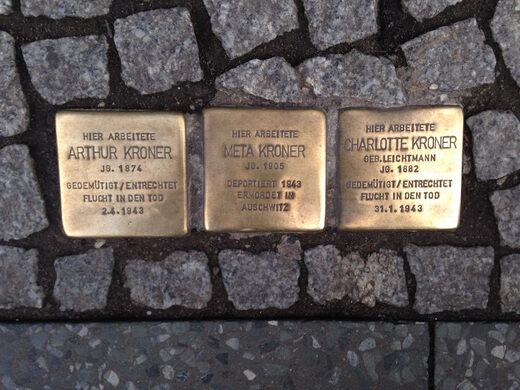
For two days, I have been trying to write this blog. So, here I go again–bear with me. I finished reading Sarah Blake’s book, The Guest Book this weekend. I enjoyed the book, but this is not a book review. It enlightened me on an art project that has been in progress in Germany since 1992 and I thought I would share it here. Memory and memorials are a very large part of our histories–all of our histories. The Stolpersteine project headed by artist Gunter Demnig is a special memorial. Stolpersteine, according to Wikipedia, means stumbling stone and that is what this memorial is–plaques placed at the exact spot a person lived their last moments of freedom before being transported to one of the Nazi death camps. As of December 29, 2019, 75000 stones or plaques have been laid. They are raised just a little so someone will stumble over the plaque and look down and pay attention.
I read about this project, as I said, in the above-mentioned book, but then I did my research on the internet. This project is a memorial to the victims of the Holocaust and Nazi atrocities aimed at those they believed posed a threat–which was anyone the Nazi government viewed as politically, socially, or racially threatening. It doesn’t commemorate the places they were murdered, but the last place of freedom that they weren’t a number but a human. I wish I was more eloquent and could express what researching this event meant to me, but I can’t seem to find the words. Memorial Day was just three weeks ago and it has been a turbulent three weeks. But reading about these stones and knowing that German students are assigned to research the individuals the stones represent only emphasized the importance of memory and history and how we remember the past is as important as the events themselves. And while that statement may seem to only be pertinent to history and historians, genealogists should remember that when they incorporate family stories into their research. The stories are a place to start, but they are not an end and do not necessarily lead where you want them to go. And then there are the family members who do not wish to discuss the past at all–and that goes back to the book, The Guest Book and a family who was very adept at silences.
Everyone stay safe.
Kristi
